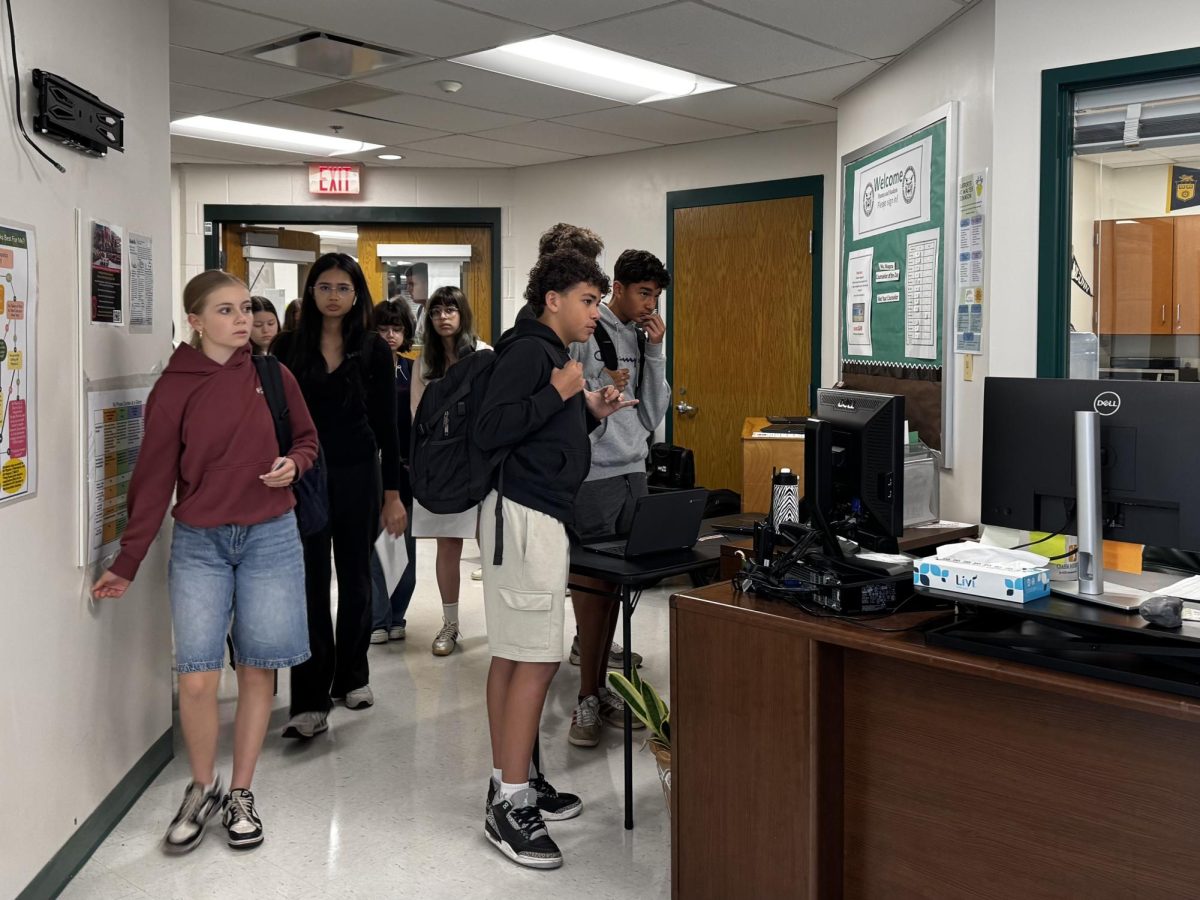Although the acoustics of any stage production may be overlooked in favor of the acting, those who know the ins-and-outs of shows know that the pit orchestra is essential to success. This spring, the show was Les Miserables, which presented a unique challenge to the orchestra, due to the play’s large musical component.
“[Les Miserables] was also just a lot more about the music, because it’s basically like an opera, where all of the issues and the drama and the plot happens within the music,” said senior Andrea Beaty, a member of pit orchestra. “We were working really hard until the last practice, but I think the payoff was really good…As far as the music, it just felt really epic.”
Beaty explained that the orchestra, which, this year, is composed of 36 students, typically starts to learn to music by sight reading each piece. After becoming familiar with the music, pit orchestra will then rehearse with the cast. Christopher Kosmaceski, one of WJ’s music teachers, serves as the conductor. Each group of instruments also has a section leader, who may work with their section individually on particularly difficult parts of the music. However, during most practices, the pit orchestra practices and plays together.
“It’s usually pretty rough at the beginning because there’s so much music,” said junior Miranda Lingenfelter, who plays the violin. “It’s just an incredible amount that we have to work through in a short amount of time. It tends to get smoother, until we start working with the cast, when it’s really rough again because you have all the parts together. Then it all evens out.”
Pit orchestra typically does not participate in the fall production, and so each year’s orchestra is typically formed after winter break. Students who are in symphonic orchestra, wind ensemble or jazz band, three of the most advanced music classes, are eligible to join. Beaty, a cello player, is in symphonic orchestra. The instruments in pit orchestra may vary depending on which kinds of music the show requires. According to Beaty, Les Miserables had more symphonic sounds, compared to last year’s production of Pippin.
This year, a variety of instruments were represented by pit orchestra, including violins, violas, electric bass and cellos, which made up the string section; trumpets, french horns, flugelhorns and trombones, which comprised the brass winds section; and clarinets, flutes, oboes, English horns and the alto saxophone, which made up the woodwind section. Additionally, there is one percussionist, one person on drums and two people on keyboards.
“The keyboards are really essential, especially for Les [Miserables],” said Beaty. “They had basically all the parts, we would accompany them, but they played the entire show.”
Initially, orchestra practices are held twice a week for two hours each. As time goes on, practices progressively become longer or more frequent, up until “hell week.” Hell week occurs the week prior to opening night, during which the orchestra stays until 10:00 p.m. each night.
Although participating in pit orchestra comes with long practices and rehearsals, the orchestra is a way for students to get involved in the play without acting or singing.
“I really like shows and musicals, but I’m not really a singing person and I’m not really a being-on-stage person,” said Lingenfelter. “So with the pit, you can be below and behind-the-scenes but be apart of everything that’s going on.”
But the students in the orchestra don’t just work together during rehearsals. According to junior Pam Fucello who plays the flute, many pit members are also good friends.
“My favorite [part of pit orchestra] is just being with everyone,” said Fucello. “Everyone is there because they love music and they just love playing. It’s just fun to be with those people.”
For Beaty, playing in the pit for Les Miserables was a meaningful experience. “All musicians, I think, automatically put a story to what they’re playing. But with Les Miserables, it’s just such an elaborate story already. Every note that you’re playing means something on the stage.”
Fucello also appreciates her experiences from her time playing in the pit.
“Mr. [Kosmaceski] always says ‘You know you’re doing a good job if no one knows you’re there,’” said Fucello. “So if [the audience] just hear[s] the music…and people just forget that you’re there, then you’re doing a good job.”















